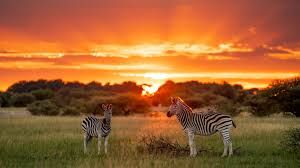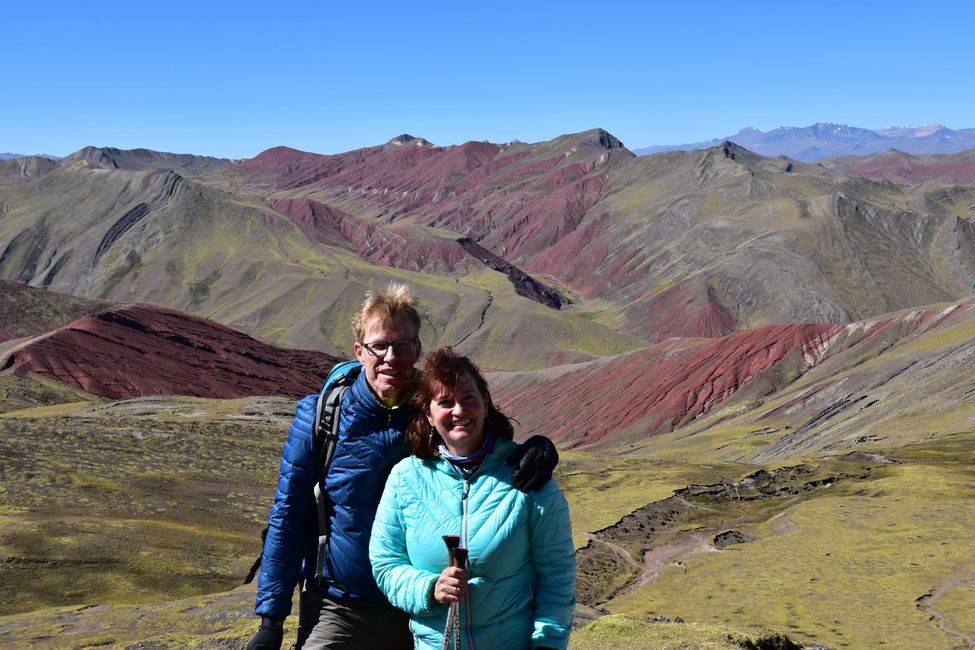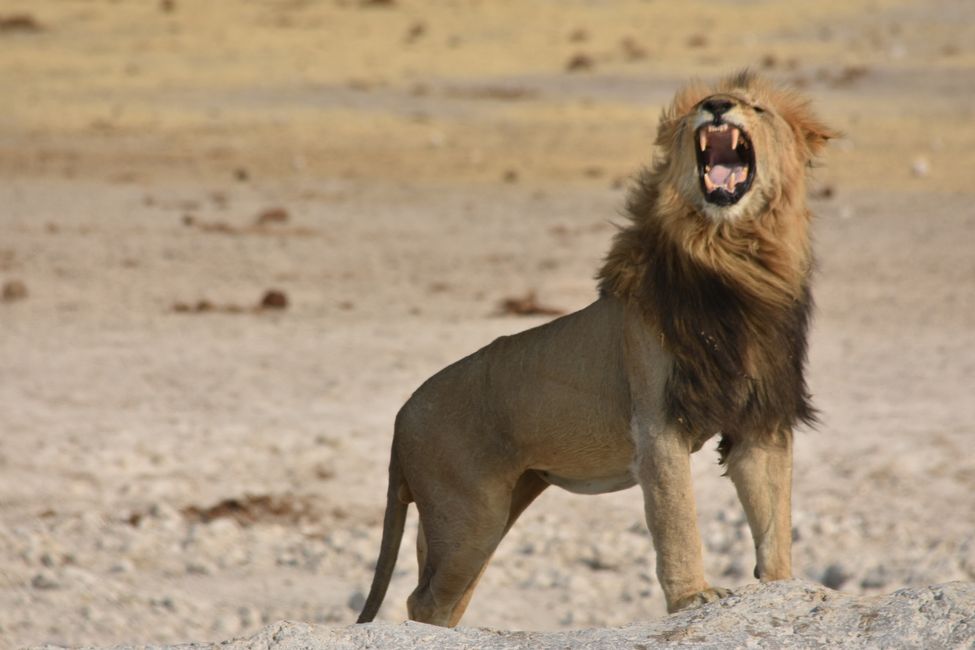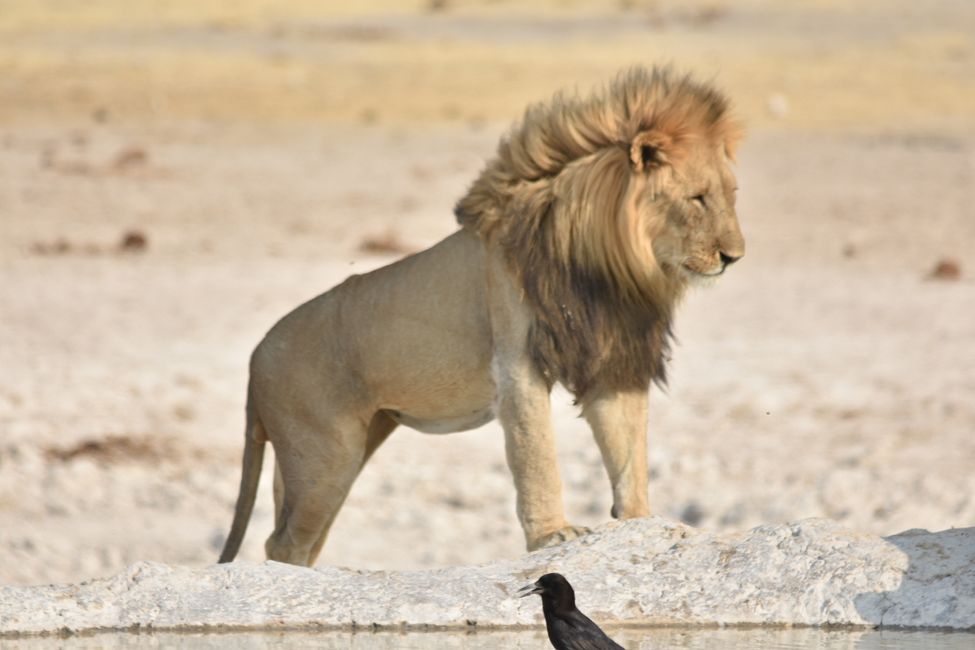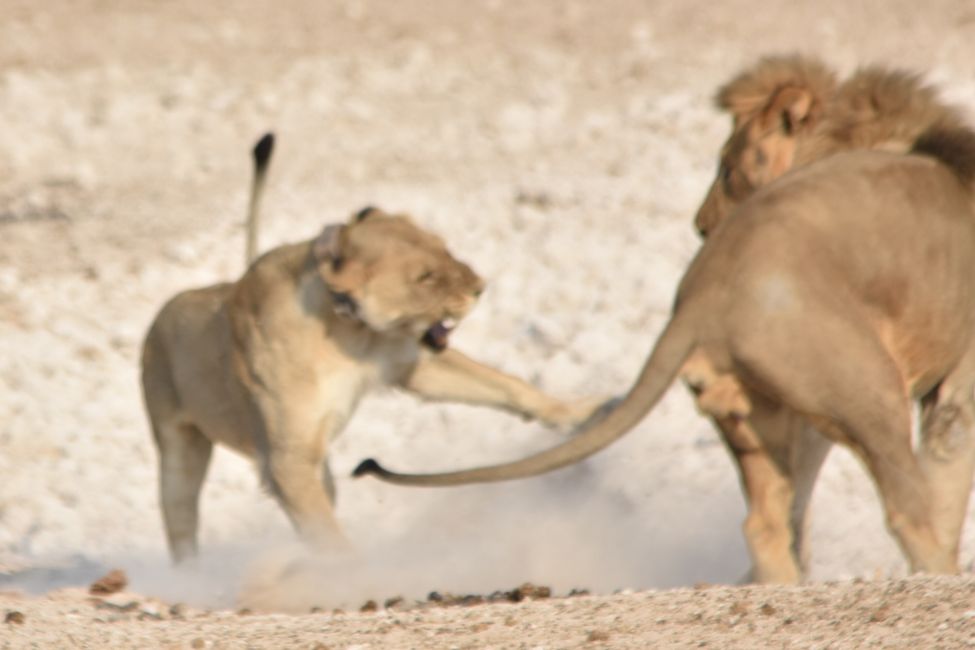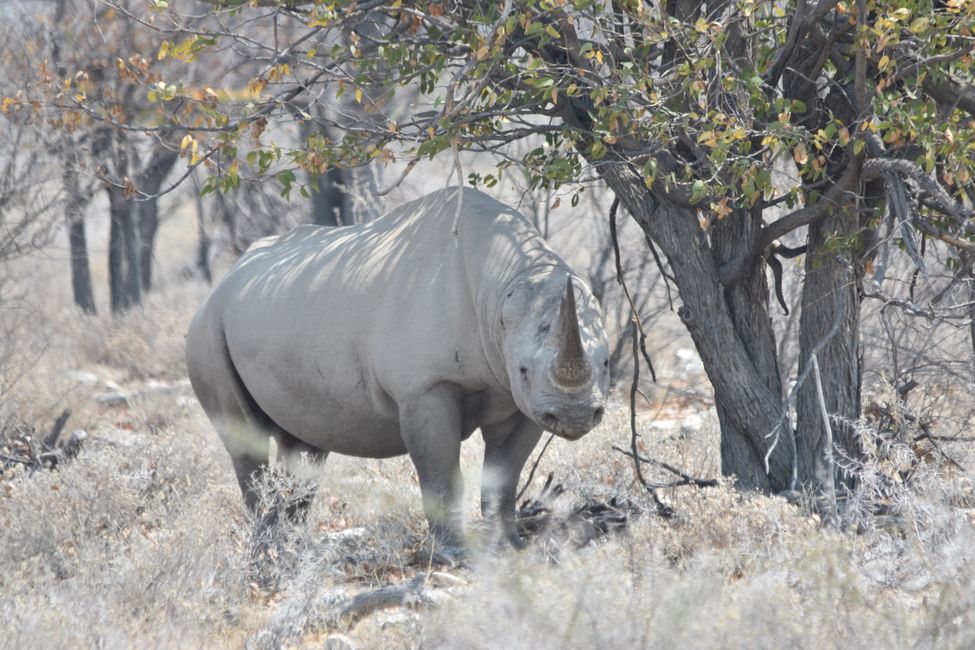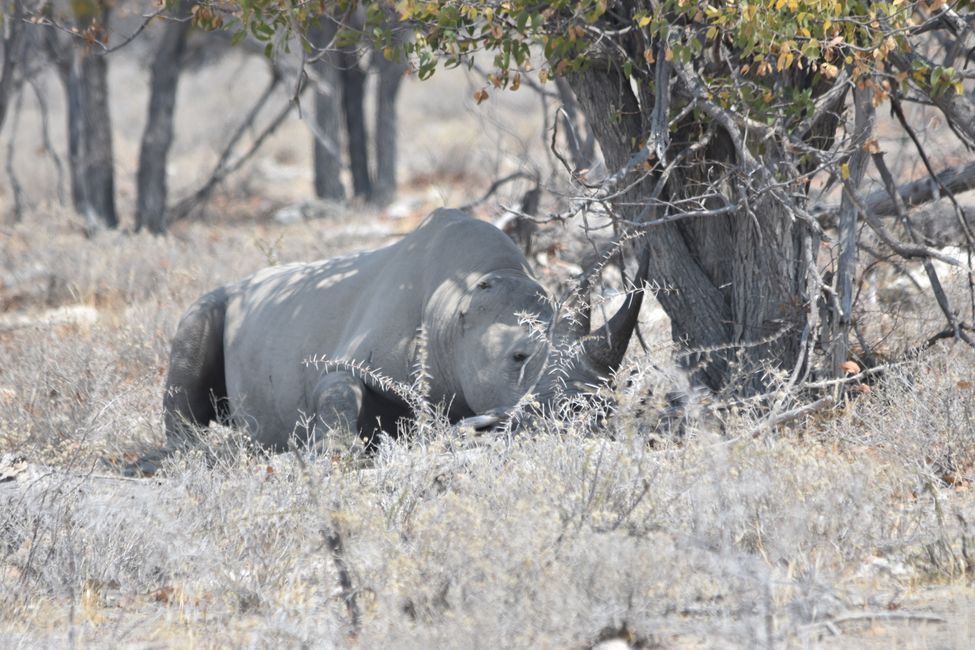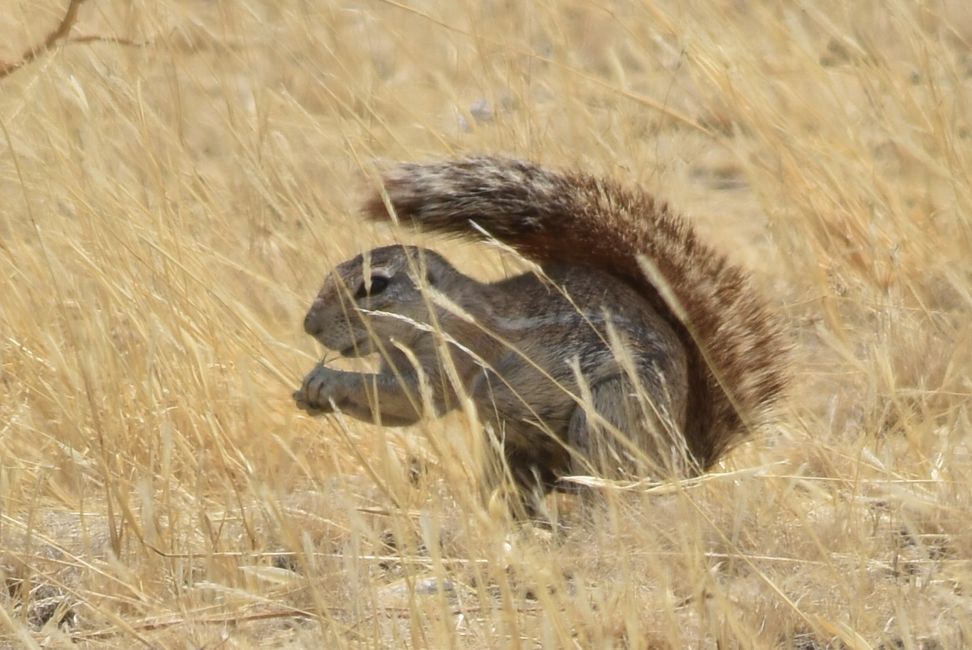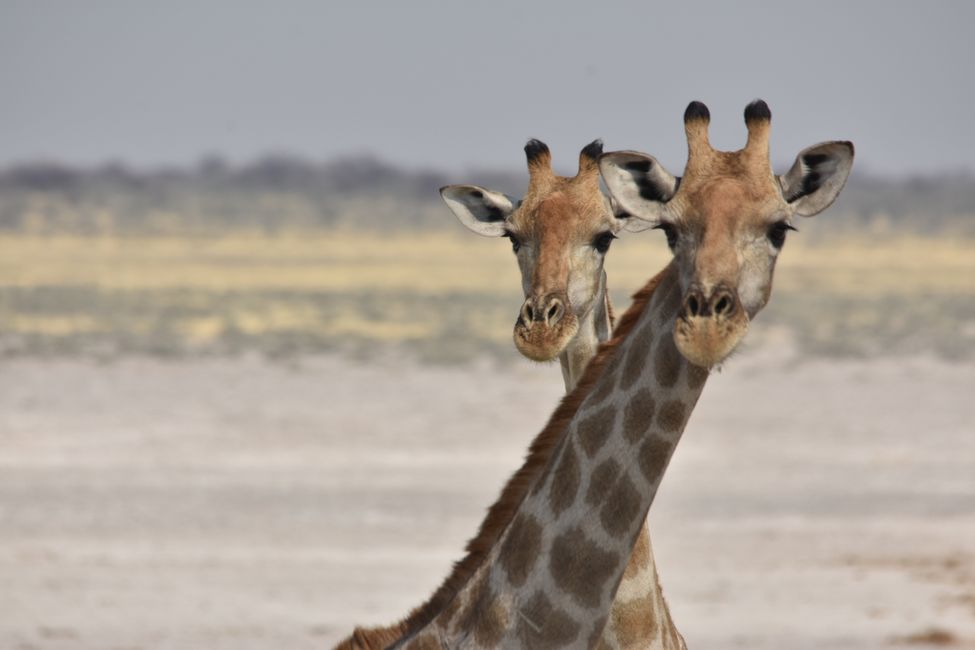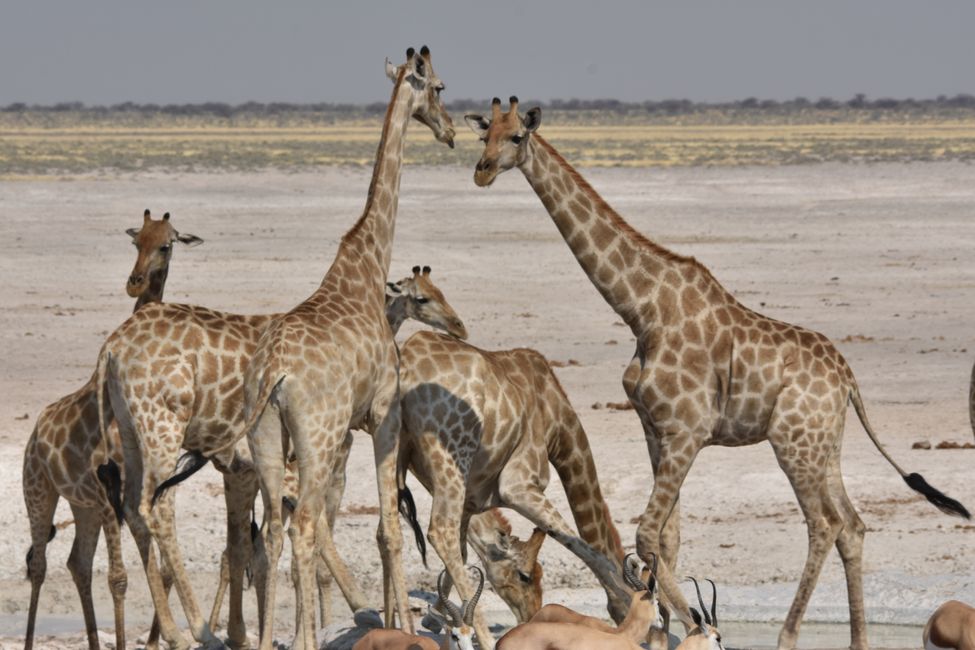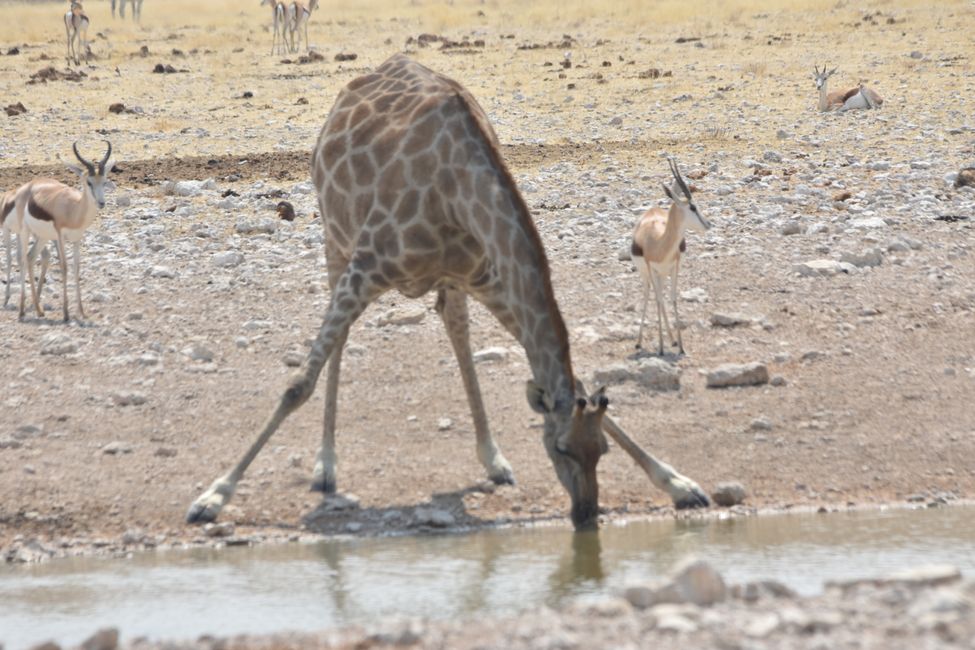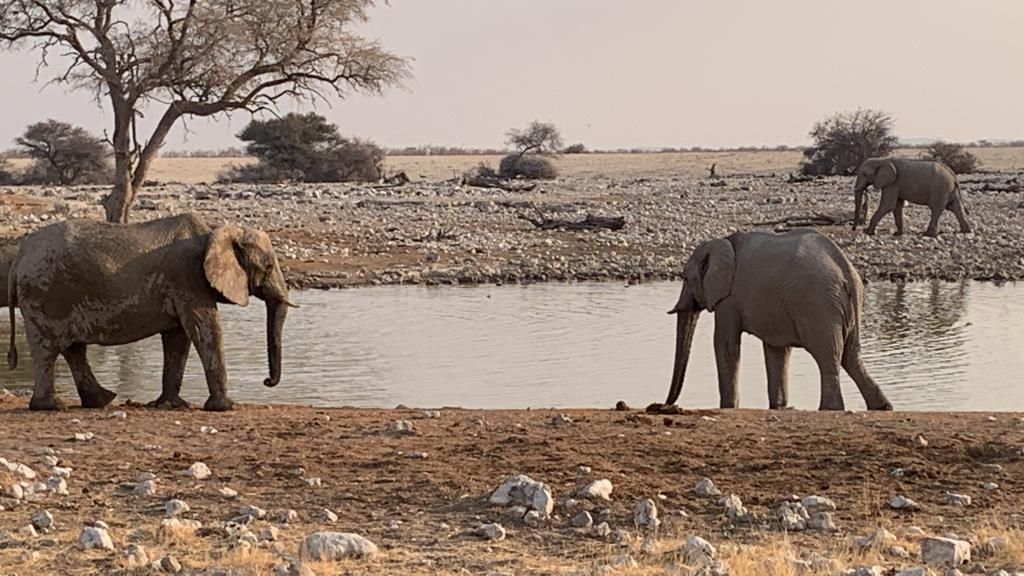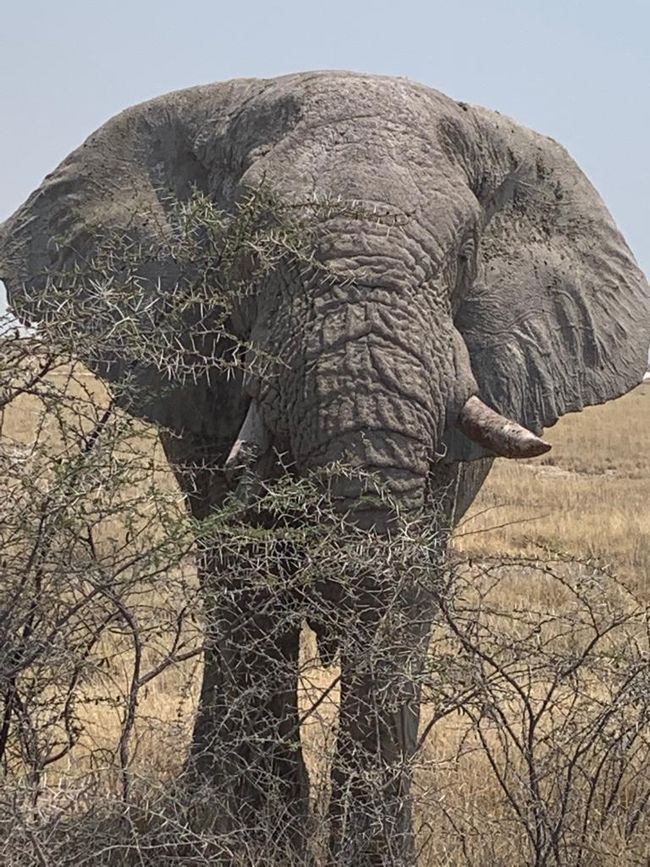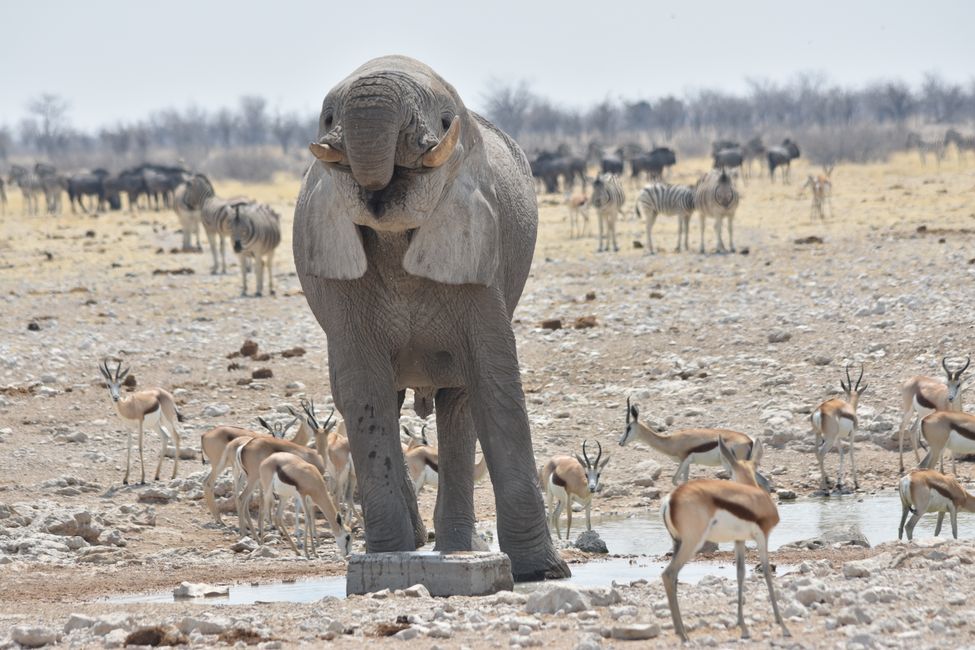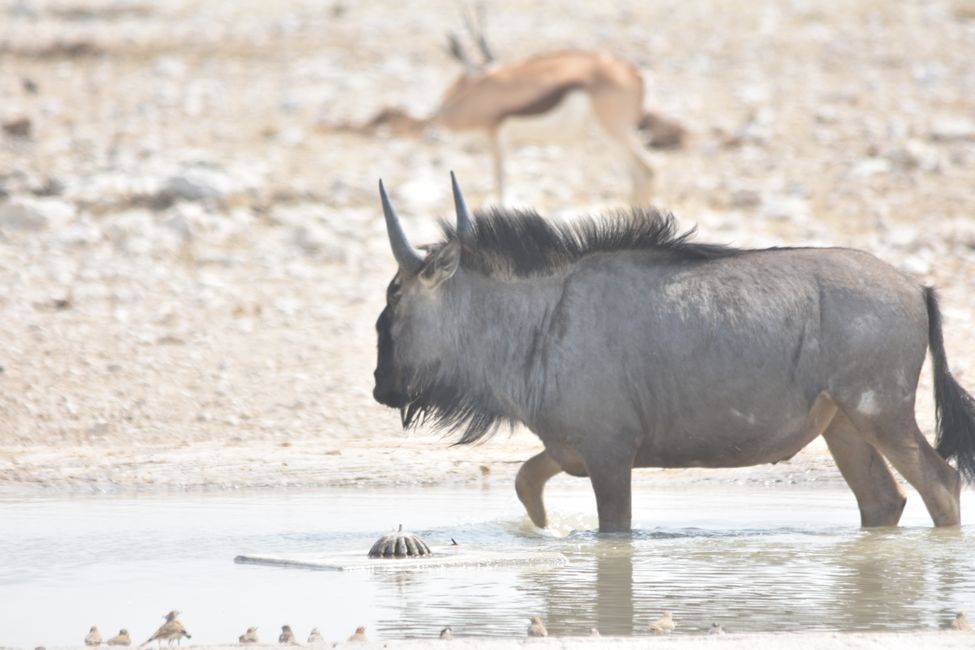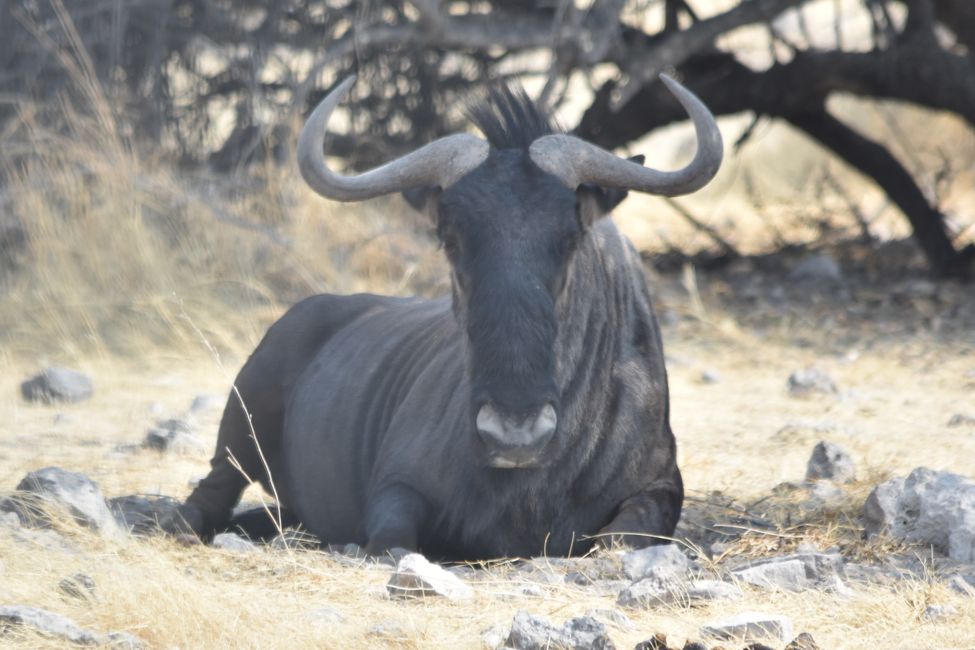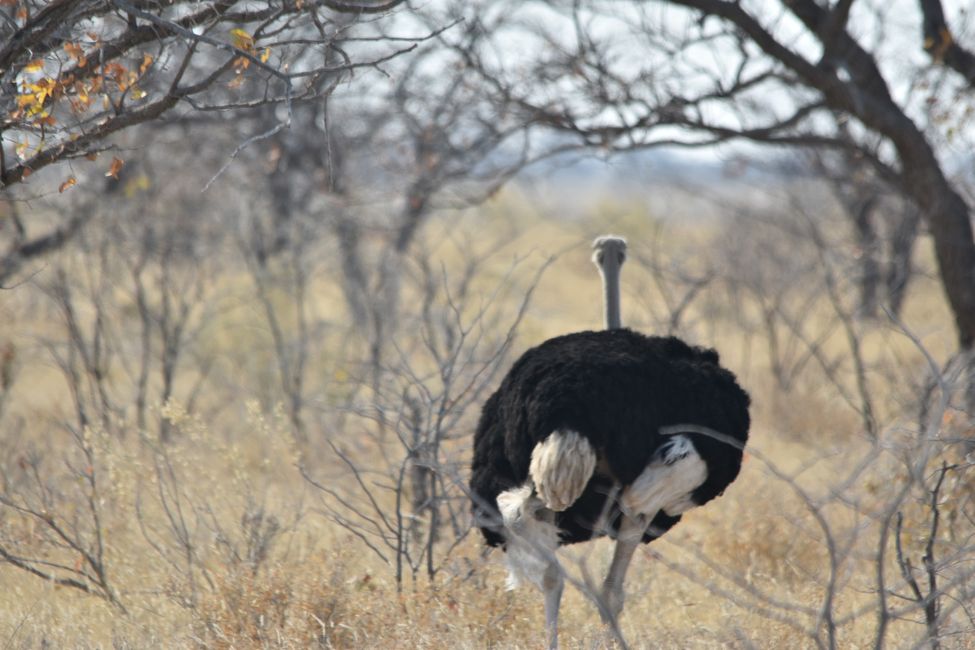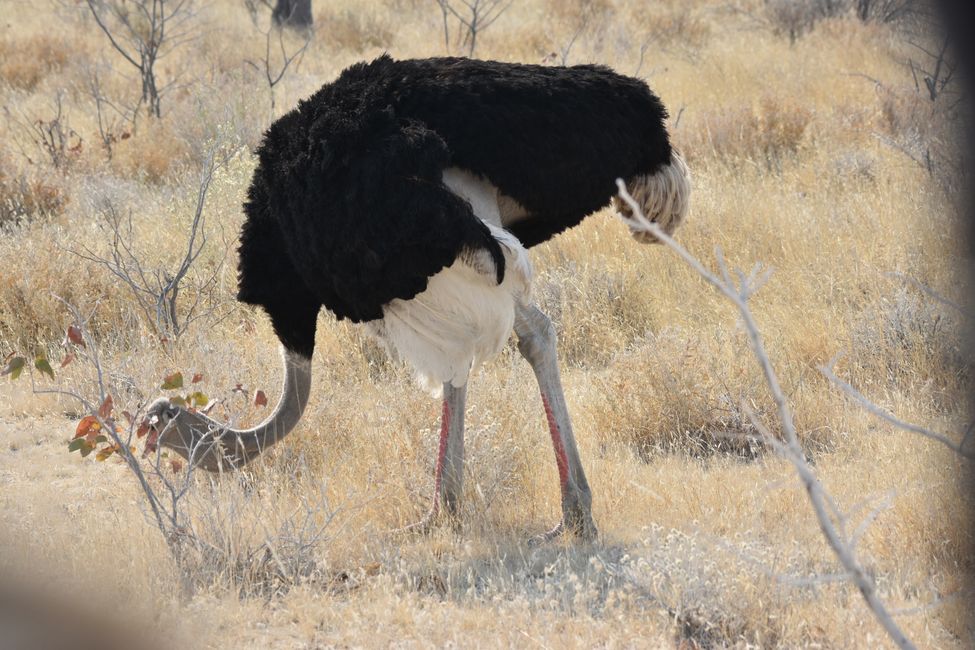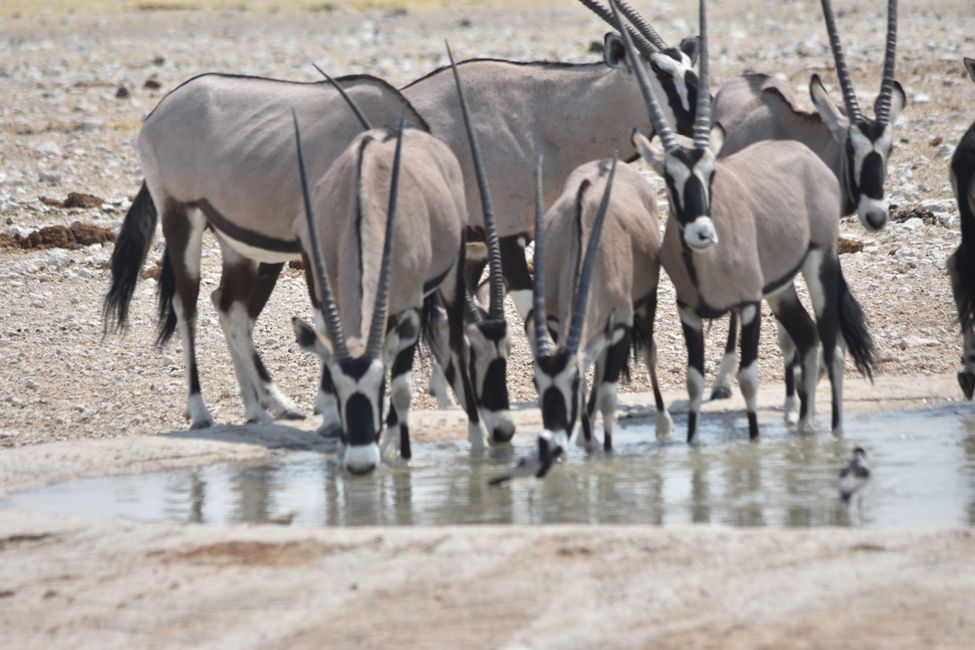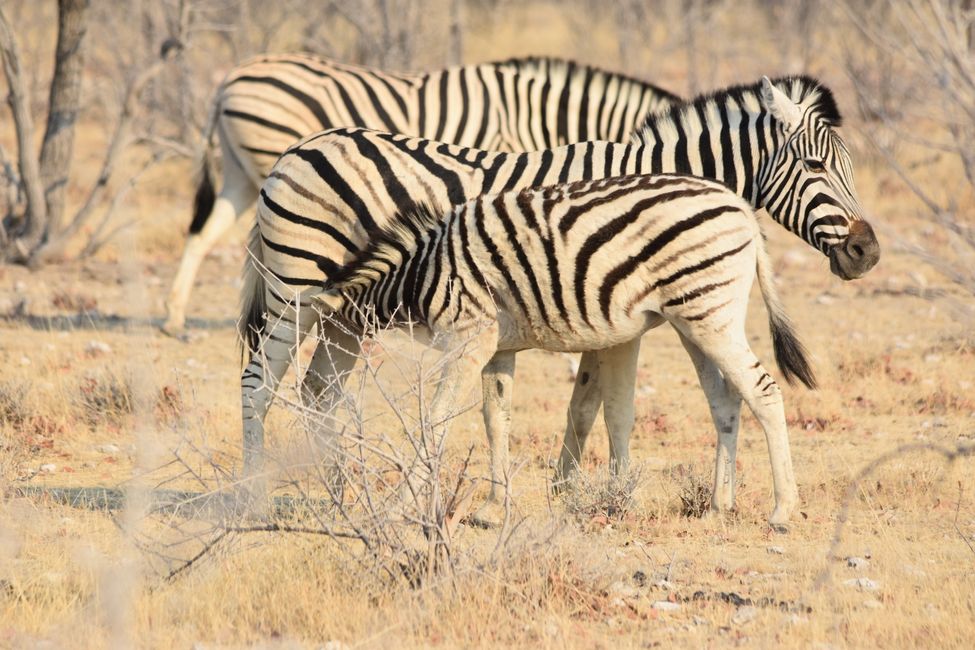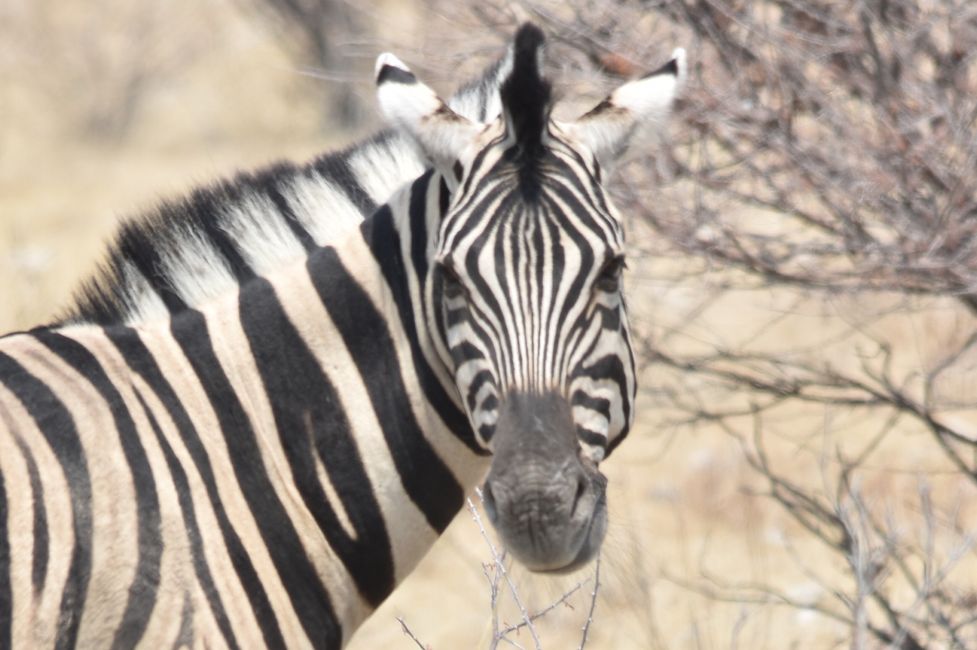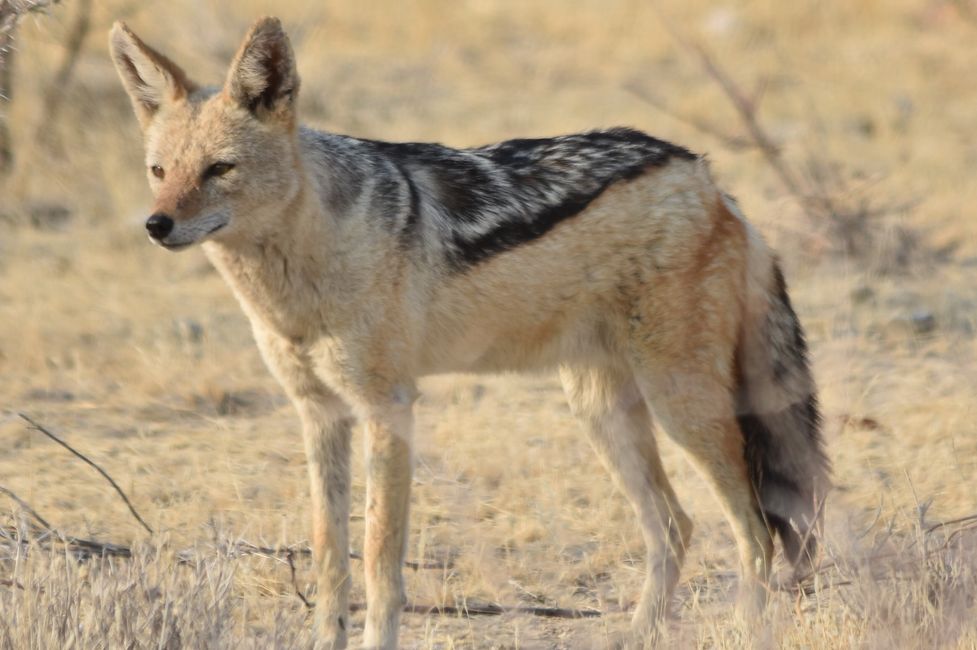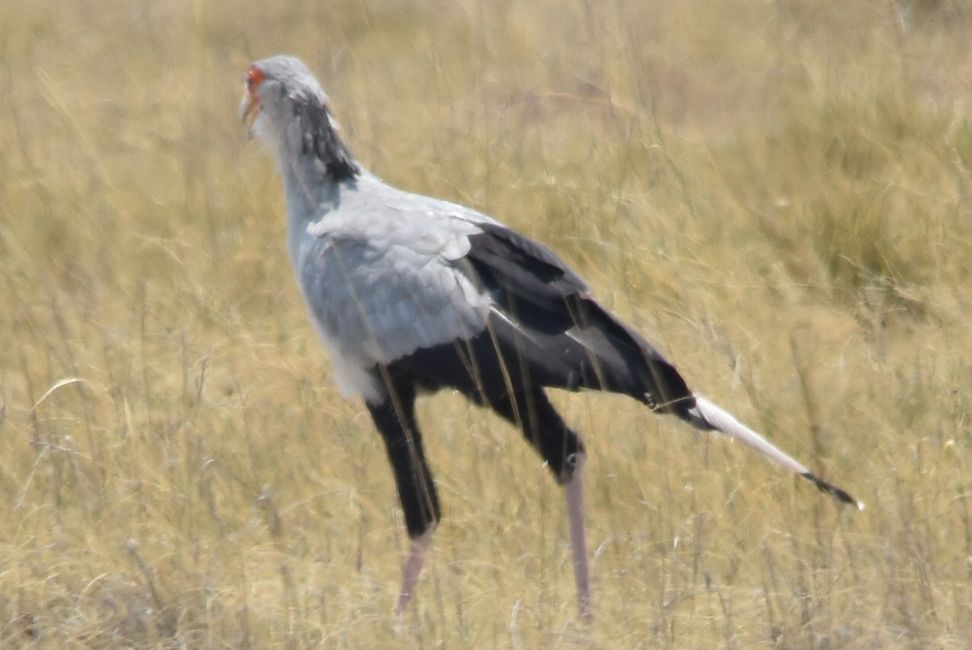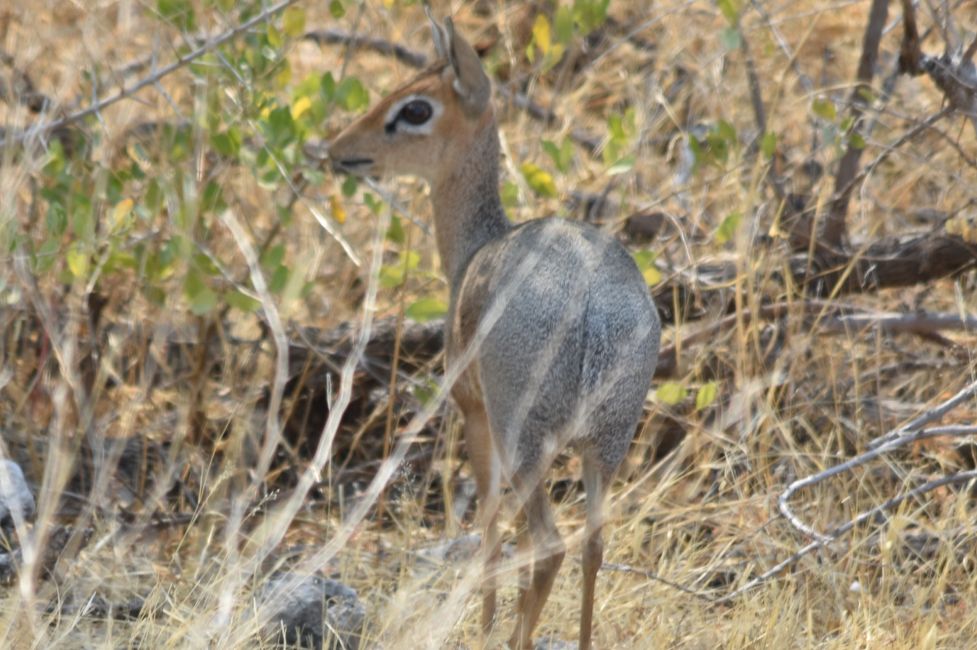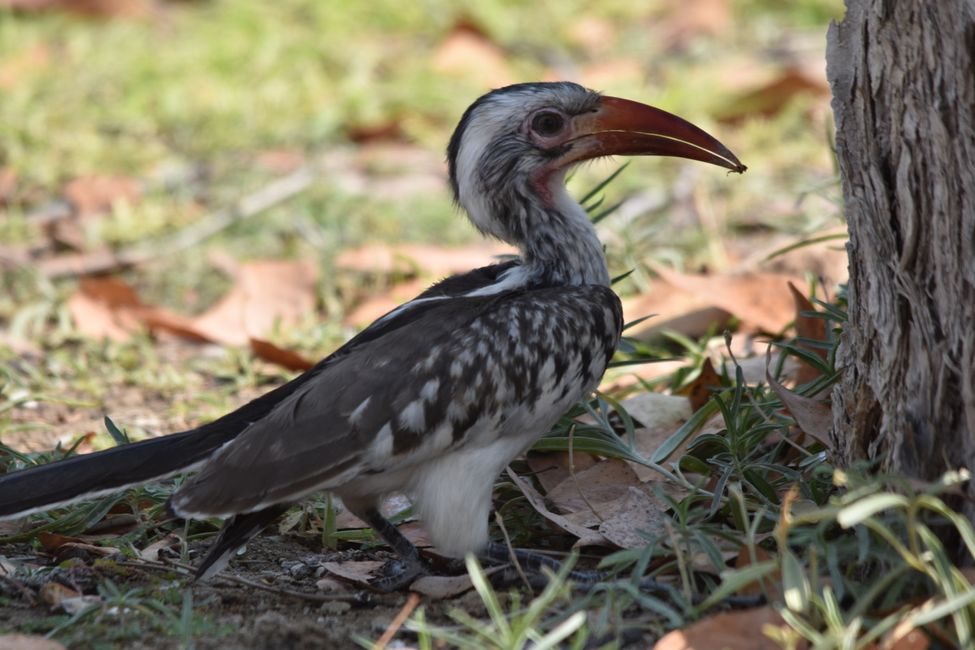Etosha
MIVOAKA: 30.09.2022
Misoratra anarana amin'ny Newsletter
We saw a rhinoceros, fighting elephants, an eland antelope, and much more! Etosha is one of the largest nature reserves in southern Africa. It is about half the size of Switzerland. Only a small part is available for tourism, the rest is used for research.
There is always something happening at the many waterholes. But we wouldn't have noticed the rhinoceros or the small dik-dik. The rhinoceros looked like a termite hill, and the dik-dik is simply very, very small.
A small correction: Both male and female giraffes have horns - those of females, however, are much smaller. The guide had given us incorrect information or we misunderstood him. In addition, giraffes are the 'guardians' at the waterholes because they are large and have very good sight, smell, and hearing.
An elephant only digests about 40% of its food, the rest is excreted. Other animals, such as the secretary bird, eat these undigested fruits.
The zebra does not need shade because the black and white stripes function like an air conditioner. In addition, the stripes confuse a hunting lion. The oryx also uses the stripes on its face to cool its body.
Wildebeests and giraffes form a unit: The zebra grazes the tall grass and the wildebeest grazes the short grass. Since wildebeests have very poor vision and hearing, they simply follow the zebras when they start running.
The red deer usually has something white on its hindquarters (a circle on the rump, the base of the tail, the hind legs). When one animal starts running because it senses danger, all the others of the same color start running as well.
There is strict order at a waterhole: When the elephants come, everyone else moves away.
Empty termite hills are often occupied by mambas or cobras. The climate/temperature here is ideal for the eggs, so they do not need any further care.
Misoratra anarana amin'ny Newsletter
Valio
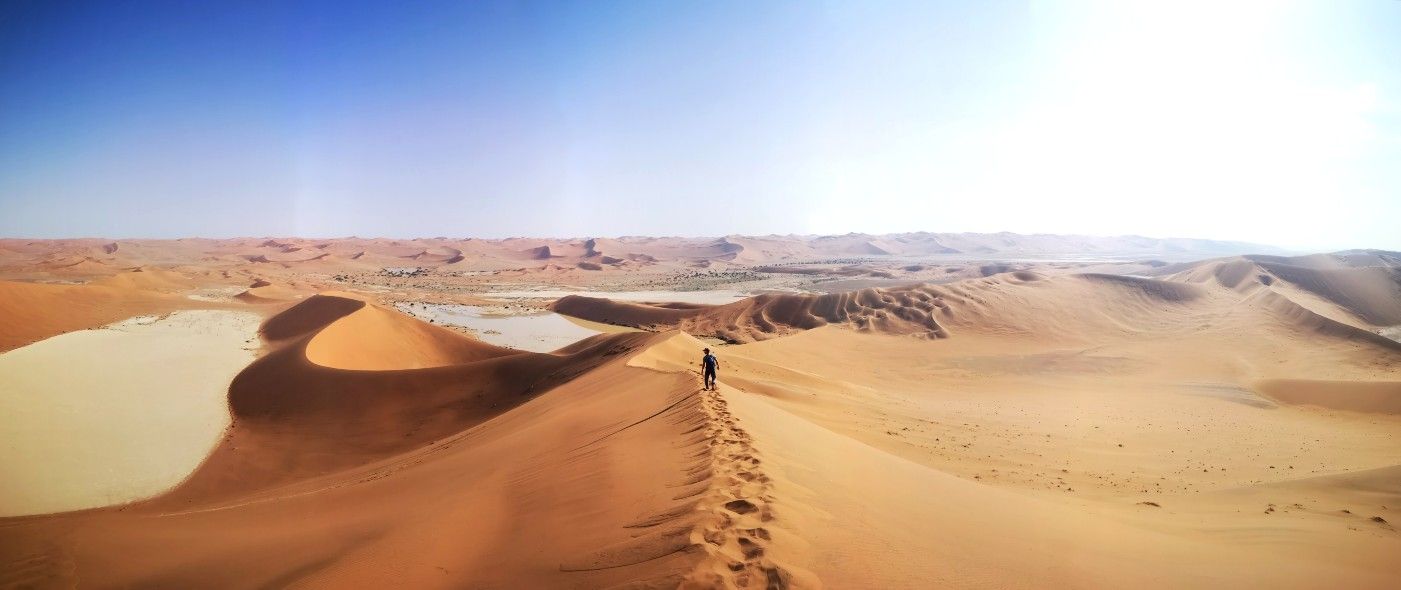
Tatitra momba ny dia Namibia
